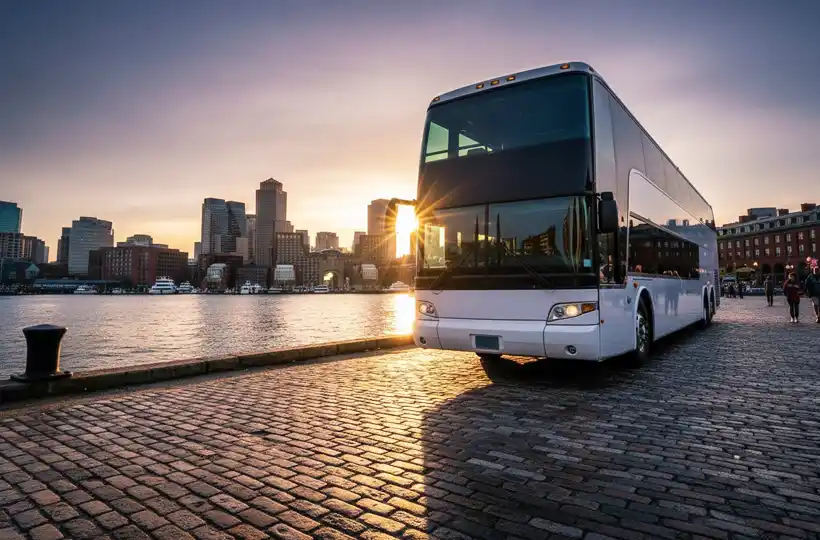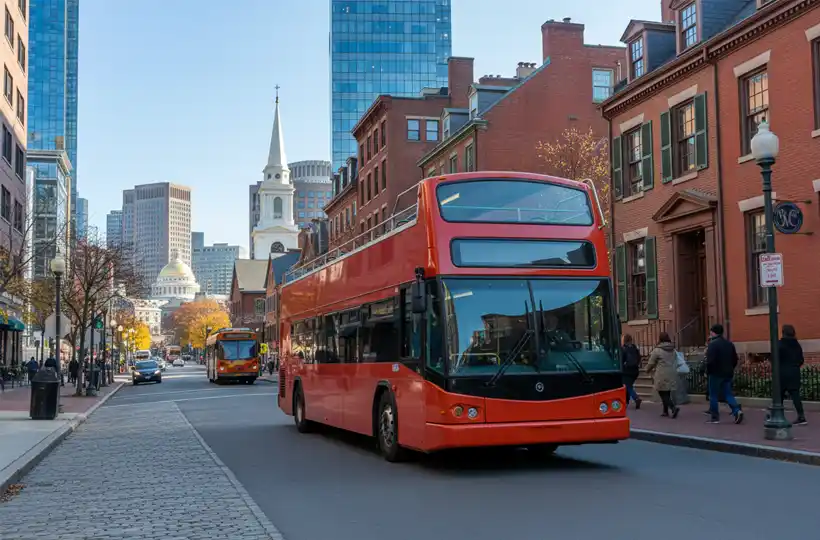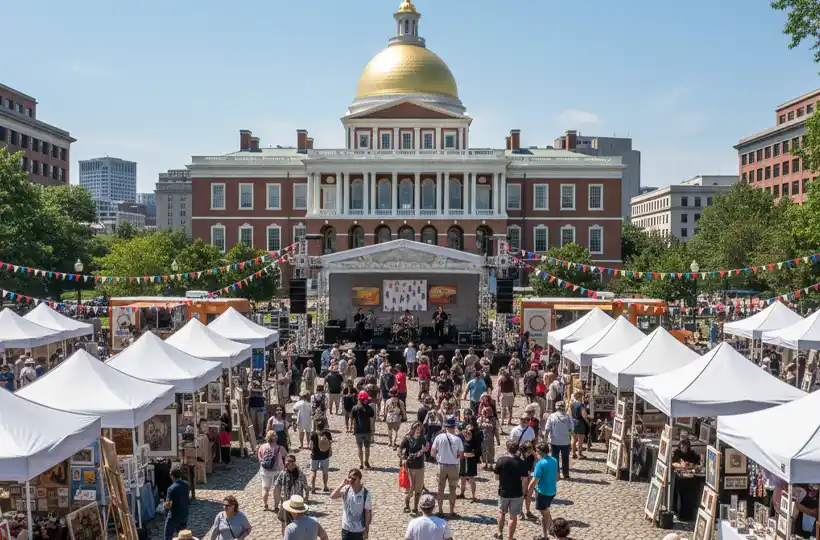Tired of the same old Boston suburbs recommendations? You’re about to discover the neighborhoods locals desperately try to keep off tourist maps.
Beyond the well-known areas like Cambridge and Beacon Hill, Boston suburbs hide communities with unique character, affordable housing, and authentic local culture. Surprisingly, these 13 neighborhoods remain relatively undiscovered despite offering everything from historic architecture to diverse dining scenes and outdoor spaces.
Whether you’re planning a move or simply exploring beyond downtown Boston, these hidden suburban gems provide the perfect balance of city accessibility and community charm. From Somerville’s artistic vibe to Peabody’s small-town feel, each area has carefully guarded secrets that make them special to residents. Let’s explore what makes these 13 Boston suburbs worth discovering before everyone else catches on.
Somerville
Nicknamed “The Brooklyn of Boston,” Somerville packs extraordinary diversity and character into just 4.12 square miles, making it the most densely populated municipality in New England. This vibrant city sits just 3.2 kilometers northwest of Boston along the Mystic River, offering a perfect blend of urban accessibility and neighborhood charm.
Somerville overview
Home to 81,045 residents speaking over 50 languages, Somerville features a distinctive landscape of more than 20 city squares, each with its unique personality. Additionally, the city boasts an impressive artistic presence—after New York City, Somerville has more artists per capita than anywhere else in America. In 2006, the Boston Globe named it the “best-run city in Massachusetts”.
Hidden gem in Somerville
Prospect Hill Park offers panoramic views of Boston after climbing 86 steps to its historic tower—the site where America’s first flag was raised in 1776. Meanwhile, the Somerville Community Path provides a scenic greenway for walking or biking, connecting Davis Square to Lechmere. For chocolate enthusiasts, Taza Chocolate Factory Tours reveal the art of stone-ground chocolate making.
Why locals love Somerville
Residents cherish the walkable neighborhoods and strong community spirit manifested through unique events like PorchFest and the quirky Fluff Festival celebrating Somerville’s invention, Marshmallow Fluff. Furthermore, the diverse food scene spans authentic international cuisine to craft breweries, particularly concentrated in Union and Davis Squares.
Brookline
Located just four miles from downtown Boston, Brookline stands out among Boston suburbs as a unique independent town completely surrounded by the city on three sides. Historically established as a farming hamlet called Muddy River in the 1630s, Brookline officially incorporated as a separate town in 1705.
Brookline overview
This mature suburban community spans approximately six square miles and maintains a distinctive character with urban amenities. Unlike many Massachusetts towns, Brookline never developed significant industrial areas, with less than 6% of land zoned for commercial use. The town operates under a Representative Town Meeting form of government with 240 elected members. Housing prices rank among Massachusetts’ highest, with single-family homes averaging $2.51 million as of 2023.
Hidden gem in Brookline
Two historic houses that served as Underground Railroad stops remain standing as Brookline’s best-kept secret. The William Ingersoll Bowditch cottage on Toxteth Street and Samuel Philbrick House on Walnut Street both sheltered escaped slaves, including Henry “Box” Brown and the Crafts. Although privately owned now, these homes feature discreet plaques identifying their historical significance.
Why locals love Brookline
Residents cherish the perfect balance of city convenience with suburban tranquility. The exceptional public schools, result of higher-than-average property taxes, attract families. Moreover, Brookline’s tree-lined streets, vibrant cultural scene at places like Coolidge Corner Theatre, and robust public transportation via the Green Line’s C and D branches make daily living both sophisticated and welcoming.
Malden
Known for its remarkable diversity, Malden ranks among the top five most diverse communities in Massachusetts. This vibrant city of 66,263 residents sits just five miles northwest of Boston, offering an appealing blend of urban amenities and neighborhood charm.
Malden overview
Originally settled by Puritans in 1640 on land purchased from the Native American Pennacook Tribe, Malden was incorporated as a separate town in 1649 and later as a city in 1882. The city spans 5.1 square miles with a dense population of 13,137 inhabitants per square mile. Malden’s international makeup is evident in its demographics—41.2% of residents are foreign-born, with 50.4% born in Asia. Bloomberg Business named it the “best place in Massachusetts to raise kids” in 2009, citing its affordability and proximity to Boston.
Hidden gem in Malden
Boda Borg Boston stands as Malden’s most unique attraction—the first U.S. location for this Swedish entertainment concept that opened in 2015. This real-world gaming experience features “quests” that test both mind and physical abilities. Nature enthusiasts appreciate Middlesex Fells Reservation with its 2,575 acres of open space for hiking and outdoor activities. Another local secret is Waitts Mount, a hill offering breathtaking views of Boston at sunrise and sunset.
Why locals love Malden
Residents cherish the strong sense of community spirit and excellent transportation options—the Orange Line at Malden Center puts North Station just ten minutes away. The Northern Strand Community Trail, built on an abandoned railroad corridor, connects cyclists to Boston and the coast. Locals also enjoy the thriving international food scene, particularly along Main Street and Pleasant Street where Vietnamese, pan-Asian, Chinese, and Middle Eastern options abound. The Malden Summer Festivals bring the community together with monthly street events featuring live music, comedy, and a farmers’ market.
Watertown
Founded in 1630 as one of the first Massachusetts Bay Colony settlements, Watertown offers a blend of rich history and modern amenities just six miles northwest of Boston. This charming city along the Charles River spans 4.17 square miles and hosts a diverse population of 35,329 residents.
Watertown overview
Bordered by Belmont and Cambridge to the north, Boston and Newton to the south, and Waltham to the west, Watertown features distinct neighborhoods including Bemis, Coolidge Square, East Watertown, Watertown Square, and the West End. The city’s ethnic diversity enriches daily life with strong cultural ties to Armenian, Irish, Italian, Canadian, and Greek communities. Consequently, the population density reaches 8,809 persons per square mile, yet numerous parks, cemeteries, and riverbanks provide welcome open spaces throughout the area.
Hidden gem in Watertown
The Armenian Museum of America stands as Watertown’s most remarkable secret treasure, offering visitors access to striking cultural artifacts, a world-class photography gallery featuring Yousuf Karsh, and powerful exhibits about Armenian history. History enthusiasts will appreciate the Edmund Fowle House, built in 1772—the second oldest surviving house in Watertown—which served as headquarters for the Massachusetts government during the American Revolution. For food lovers, hidden local spots like Olivia’s Bistro and Ravello Italian Kitchen provide authentic dining experiences away from tourist crowds.
Why locals love Watertown
Residents cherish Watertown’s exceptional safety record—the total crime rate is 785 per 100k people, 66.5% lower than the national average. Families appreciate the city’s proximity to Boston while enjoying a quieter suburban lifestyle. Given that the median household income of $101,402 exceeds the state average, the community maintains high-quality amenities. Notably, the riverside paths stretching along the Charles River connect to Cambridge, Brighton, and Waltham, offering scenic recreation options that contribute to the high quality of life in this historic Boston suburb.
Newton
Newton distinguishes itself among Boston suburbs with its unique composition of thirteen distinct villages spread across 18.33 square miles, just seven miles west of downtown Boston. Nicknamed “The Garden City,” Newton truly lives up to its name with nearly 20% of its total land area dedicated to open space.
Newton overview
Home to 88,923 residents as of 2020, Newton borders Boston’s Brighton and West Roxbury neighborhoods, Brookline, Watertown, Waltham, Weston, Wellesley, and Needham. Instead of having a single downtown area, Newton features thirteen villages—Auburndale, Chestnut Hill, Newton Centre, Newton Corner, Newton Highlands, Newton Upper Falls, Newton Lower Falls, Newtonville, Nonantum, Oak Hill, Thompsonville, Waban, and West Newton. This patchwork structure creates a varied landscape where each village maintains its own character and small downtown area.
Hidden gem in Newton
Crystal Lake stands as Newton’s spectacular natural treasure—a 33-acre natural lake in Newton Centre surrounded primarily by private homes but featuring two small parks and a designated swimming area. History enthusiasts cherish the Jackson Homestead, now the Newton History Museum, renowned for its role as an Underground Railroad stop. Echo Bridge offers a unique experience where the arched surface underneath reflects sounds back when visitors clap or make noise.
Why locals love Newton
Residents consistently praise Newton’s excellent public schools, ranked among the best in Massachusetts. The city’s exceptional safety record has earned it recognition as one of America’s safest cities multiple times. Additionally, nature enthusiasts appreciate the numerous parks and conservation areas, especially Hammond Pond Reservation with its walking trails and rock climbing opportunities. Ultimately, Newton’s perfect balance of suburban tranquility with urban accessibility—via multiple transportation options including the Green Line D branch—makes everyday living both sophisticated and convenient.
Needham
Originally settled in 1680 as part of Dedham, Needham has evolved into a charming Boston suburb that perfectly balances small-town feel with city accessibility. Located just 10 miles southwest of Boston, this triangular-shaped town is nearly surrounded by the Charles River.
Needham overview
With a population of 32,091 residents as of 2020, Needham spans 12.75 square miles of picturesque landscapes. The town boasts exceptional educational institutions, including five elementary schools, two middle schools, and Needham High School. Currently ranked #16 among Massachusetts suburbs with the best public schools, education remains a cornerstone of the community. Formerly agricultural land, Needham has transformed into a primarily residential area, though its northern section beyond I-95/Route 128 houses technology companies like PTC and TripAdvisor.
Hidden gem in Needham
Martini Junction stands as Needham’s most enchanting secret—a 120-foot model railroad nestled deep within the Needham Town Forest. Built in the early 2000s by a local resident named Jim Metcalf, this whimsical attraction features toy trains, fairy houses, and miniature villages that create a magical woodland experience for visitors of all ages.
Why locals love Needham
Residents cherish Needham for its:
- Exceptional safety—crime rates 81% lower than national averages
- Vibrant downtown with locally-owned shops and restaurants
- Strong sense of community evidenced through events like the Needham Street Fair
Arlington
With a rich artistic legacy and historical significance, Arlington stands out among Boston suburbs as the birthplace of Uncle Sam and home to renowned sculptor Cyrus Dallin. Located just six miles northwest of Boston, this charming town perfectly balances cultural richness with suburban tranquility.
Arlington overview
Covering 5.5 square miles with a population of 46,308 as of 2020, Arlington features diverse landscapes from the serene Mystic Lakes to picturesque Spy Pond. The town boasts an excellent educational system with ten public schools plus access to the highly-rated Minuteman Regional High School in Lexington. Originally settled in 1635 as Menotomy, Arlington gained notoriety as the site of the bloodiest battle on April 19, 1775—the first day of the American Revolution.
Hidden gem in Arlington
The Old Schwamb Mill represents Arlington’s best-kept secret—the oldest continuously operating mill site in the United States. Currently producing museum-quality, hand-turned wooden oval frames using original methods from 1864, it offers visitors a glimpse into traditional craftsmanship. Similarly, the Cyrus E. Dallin Art Museum showcases works by the celebrated sculptor who created iconic pieces like the Appeal to the Great Spirit displayed at Boston’s Museum of Fine Arts.
Why locals love Arlington
Residents cherish the town’s perfect blend of history and recreation. The Minuteman Bikeway, inducted into the Rail-Trail Hall of Fame, provides excellent cycling infrastructure. Significantly, Arlington’s vibrant cultural scene includes the historic Regent Theatre (built in 1916), which hosts performances and the Arlington International Film Festival. Indeed, the community spirit shines through seasonal events like Town Day and the Fox Festival Parade, bringing neighbors together throughout the year.
Quincy
Proudly recognized as the “City of Presidents,” Quincy stands as the birthplace of two U.S. presidents—John Adams and his son John Quincy Adams—as well as John Hancock, the first signer of the Declaration of Independence. Situated just 10 miles south of Boston, this vibrant community of over 100,000 residents offers the perfect blend of historical significance and modern convenience.
Quincy overview
Unlike its 16 namesake cities across America, Quincy is uniquely pronounced “KWIN-zee” rather than “KWIN-see”. Originally a hub for granite quarrying and shipbuilding, the city hosted America’s first commercial railroad. Presently, Quincy boasts the highest per-capita concentration of Asian residents in Massachusetts, with approximately 66% of the Asian population being ethnic Chinese. First settled in 1625, Quincy has evolved into both a suburban business center and vibrant immigrant destination.
Hidden gem in Quincy
Secret Squantum Park offers breathtaking water views and serene walking paths away from tourist crowds. The Navy Fuel Pier provides an unexpected vantage point for photography enthusiasts. Historically significant, Quincy holds the distinction of being the original birthplace of both Howard Johnson’s (1929) and Dunkin’ Donuts (1950).
Why locals love Quincy
Residents value the exceptional transportation access with four Red Line stations connecting directly to Boston. The city’s 27 miles of coastline, including Wollaston Beach along Quincy Shore Drive, offer year-round recreation. Above all, locals appreciate the diverse culinary scene spanning from traditional bar pizza establishments to upscale dining options like The Townshend and Alba.
Waltham
Known as “Watch City,” Waltham earned its nickname from the Waltham Watch Company, which pioneered assembly-line watch manufacturing in 1854 and produced over 35 million timepieces before closing in 1957. Situated just 10 miles west of Boston, this historic city combines industrial heritage with modern appeal.
Waltham overview
Home to 65,218 residents as of 2020, Waltham houses both Brandeis University and Bentley University, establishing it as a center for research and higher education. Originally incorporated as a town in 1738 and later as a city in 1884, Waltham operates under a mayoral system with City Council governance. The city scores 62 out of 100 for walkability, reflecting its pedestrian-friendly design.
Hidden gem in Waltham
The Charles River Museum of Industry and Innovation stands as Waltham’s true hidden treasure—a “steampunk wonderland” preserving America’s industrial innovation history. Equally remarkable, Gore Place serves as a unique community resource telling the story of early 19th-century American life. Nature enthusiasts appreciate the Lyman Estate Greenhouses, among the oldest surviving greenhouses in the United States.
Why locals love Waltham
Residents treasure:
- “Restaurant Row” on Moody Street, offering diverse international cuisine
- The free “Tick Tock Trolley” running Thursday through Saturday evenings
- Annual events like the Waltham Riverfest and Watch City Steampunk Festival
- Abundant outdoor activities along the Charles River
Braintree
Situated at the crossroads of major highways just ten miles south of Boston, Braintree offers strategic positioning that makes it an ideal suburban retreat. Incorporated in 1640, this mature community combines historical significance with modern convenience while maintaining its distinct identity.
Braintree overview
Covering 14.5 square miles, Braintree balances suburban tranquility with urban accessibility. The town serves as home to 39,143 residents as of 2020 and operates under a mayor-council form of government. Certainly, Braintree’s geographic advantages stand out—positioned at the intersection of Route I-93 (128) and Route 3, it provides easy access to both downtown Boston and Cape Cod. Furthermore, excellent public transportation connects residents to Boston and Logan International Airport.
Hidden gem in Braintree
Pond Meadow Park represents Braintree’s most enchanting secret—a 320-acre conservation area spanning Braintree and Weymouth. This natural oasis features diverse habitats, walking trails, and picturesque bodies of water. Outdoor enthusiasts appreciate the park’s biking paths, birdwatching opportunities, and cross-country skiing options during winter months. Nonetheless, many visitors discover the Ranger Trail particularly captivating with its winding path through small forests.
Why locals love Braintree
Residents cherish Braintree’s exceptional education system, with multiple schools receiving top ratings on the GreatSchools scale. The community takes pride in its recreational resources, including Town Forest, Sunset Lake, Smith Beach, and an 18-hole public golf course. Subsequently, families appreciate the vibrant local culture exemplified by the Thayer Public Library, which provides museum passes and various activities for children. The town’s perfect blend of established neighborhoods and small new home clusters creates an enduring appeal that continues to attract new residents.



